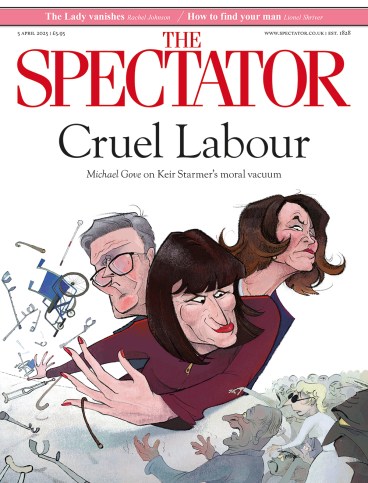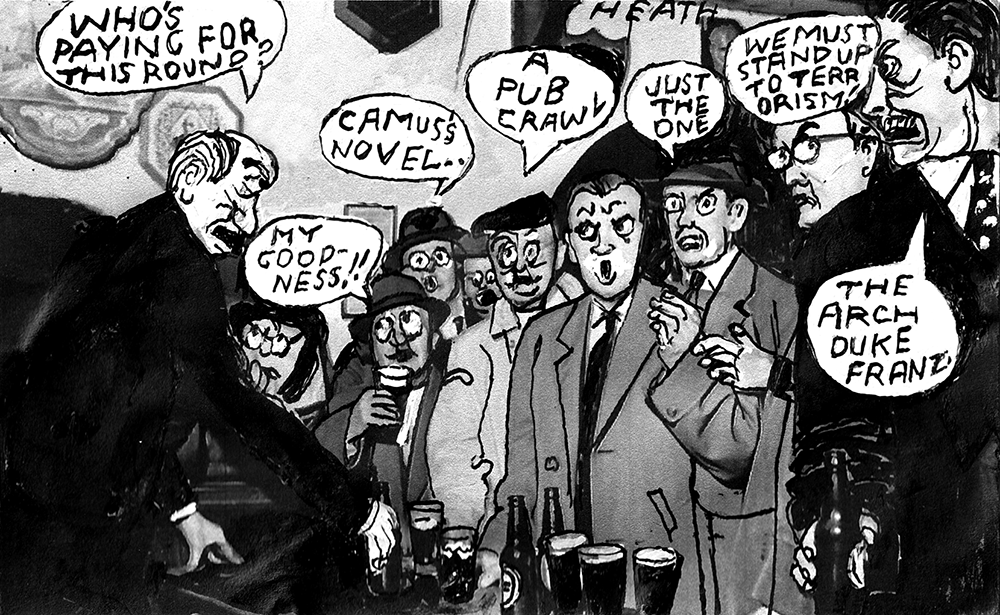
Lady Pamela Berry (Pam to everyone, so that is what I too shall call her) did many things in her life. She was president of the Incorporated Society of Fashion Designers and chair of the British Museum Society; and she conducted a passionate ten-year affair with the goatish Malcolm Muggeridge. But she was best known as a salonnière. In fact she was the last of the great salonnières of the past century.
At her house in Barton Street, Westminster, within the sound of the division bell, she gathered parliamentarians, writers, aristocrats and wits, including the Lloyd Georges, Isaiah Berlin and Nancy Mitford. Across her table, where ‘gen con’ (general conversation) was the rule, flew barbs, ferocious arguments, political secrets and top-level gossip. Nothing was allowed to interfere with the talk. Even the food, always excellent, had to be easy to manage – no globe artichokes or shellfish, for instance.
She was born in May 1914, the youngest child of F.E. Smith, the brilliant lawyer whose rise to fame and fortune took him to an earldom and the Lord Chancellorship. She grew up in Charlton, Northamptonshire, in a rambling stone house known as ‘The Cottage’. From the start she was a confident, powerful personality: rows with her siblings sometimes became so physical that once her mother had to ring for the butler and ask him to ‘separate their ladyships’.
Harriet Cullen, her daughter, who has based much of this book on her mother’s diaries and letters, has divided it into sections that make the chronology sometimes confusing. But it is a fascinating story – of someone who grew up spoilt, good-looking, forceful, privy to many secrets and attractive to men. Pam’s father died when she was 16, leaving a mountain of debts. But Lord Beaverbrook gave her an allowance for ten years, meaning that she could plunge into the sort of socialising that would become the focus of her life.
She was a noted deb and ‘it girl’ before she married, in 1935, Michael Berry, later Lord Hartwell, the younger son of the press baron Lord Camrose, owner of the Daily Telegraph. Now she was really on her way. The couple’s first house, in Cadogan Place, had three main bedrooms and six smaller ones upstairs for the servants. The drawing room was painted white, picked out in gold, with cream brocade upholstery, a white radiogram and white grand piano, for show only: Pam, like her father, was profoundly unmusical. She was also just as combative, with a vitriolic tongue. When the wife of Michael’s uncle Lord Kemsley, from a distinguished French-Mauritian family, attempted to walk into the dining room ahead of her, saying: ‘As the wife of a baron I take precedence,’ Pam replied furiously: ‘I was the daughter of an earl when you and your sister were pacing the streets of Mauritius with your prices on your backs, and I take precedence.’ She was right about the pecking order, but her riposte did not make for a harmonious relationship.
Nothing was allowed to interfere with the talk. Even the food had to be easy to manage – no globe artichokes
In 1937 the first baby arrived, and was ‘outsourced’, in Cullen’s words, to the country, together with a wonderful nanny whom Pam had found almost by chance. (Pam was a dreadful mother, emotionally neglectful and, as her children grew up, overwhelming and controlling.) This left the young marrieds free to tour Germany with Chips Channon and his wife, Honor Guinness. ‘Goering shook us by the hand and his merry eyes twinkled. He seems a lovably disarming man,’ Channon wrote in his diary.
When the war came and Goering’s merry twinkle was turning much of London to rubble, the Berrys packed up their house. Michael – always a shadowy figure in this book – reported to his radar artillery unit and Pam spent much of her time in the Camrose family suite at the Dorchester.
On the death of his father in 1954, Michael became editor-in-chief of the Telegraph and Pam’s party-giving reached its apogee. It was the era of the press barons – Lords Beaverbrook, Rothermere and Kemsley – who wielded immense power and influence. On election nights Pam hosted the Telegraph’s party for 2,000 at the Savoy, with a giant television screen on one wall. As well as the usual politicians and journalists, she would invite writers, celebrities and actors. The theatre critic Kenneth Tynan was seen ‘running around white-faced’ when Edward Heath was elected in 1970 – then, as now, luvviedom was left-leaning. At another party, it was reported breathlessly in the Paris press that: ‘The Archbishop of Canterbury stood side by side with Marlene Dietrich.’
It was to the press lords, too, that important visitors from overseas turned to gain a picture of the inner workings of the establishment, or to talk to influential people outside official meetings. Now Pam was one of them, and her gatherings were notable for frank conversation. At one such dinner for Kay Graham, the publisher of the Washington Post, when Roy Jenkins and Jeremy Thorpe had to leave temporarily to vote, Ann Fleming (then Lady Rothermere) leaned across another woman to inform Graham about Thorpe. He was a third-rate comedian with no ability of any kind who wouldn’t be taken seriously anywhere but here, she said. Unfortunately, the woman she leaned across was Thorpe’s wife, Marion.
Discretion or ties of friendship never deterred Pam from expressing her own strong opinions. ‘Macmillan is a very wicked, senile old man,’ she told her friend Lady Elizabeth Cavendish (Macmillan’s sister-in-law), and declared of Anthony Eden that he was ‘far too ill to become prime minister’. As some of her views on Eden were reflected in Telegraph articles, there were rumours that she influenced the paper’s policy – even that she dictated leading articles. Phrases such as ‘petticoat power’ began to be flung around.
Sometimes Pam would take dinner guests to the Telegraph offices at night to watch the paper go to press. After the frantic scurry of last-minute alterations, the huge presses in the basement thundered into life and within minutes she could hand a copy of the next day’s news to the cabinet minister at her side. One evening, according to legend, the large back-page photograph was of the overall winner of the Smithfield show, a magnificent bull. To Pam’s eyes, what made it a bull was far too obvious, and she sent for the retouchers. Next morning came a letter from the lawyers of the bull’s owners, claiming thousands of pounds for the stud fees lost through the bull’s missing inches. It was said that she never interfered again.








Comments